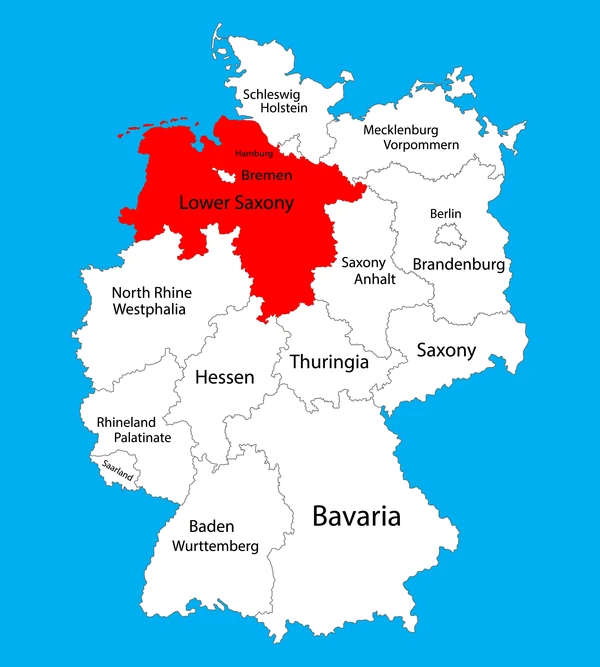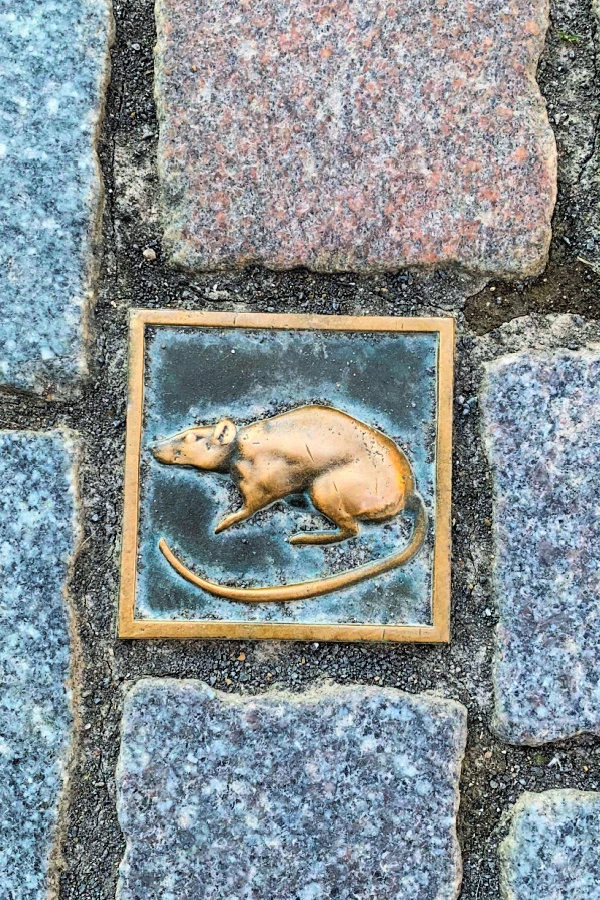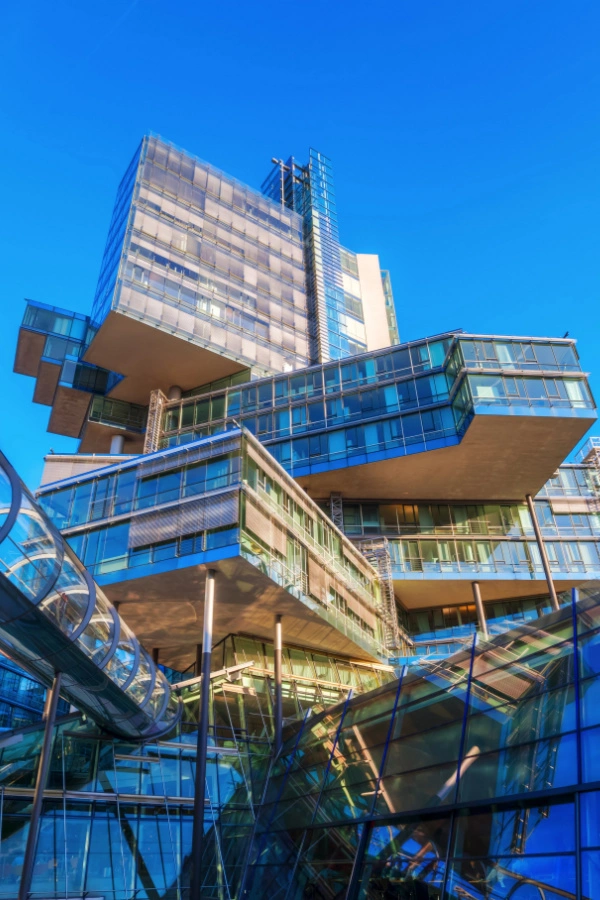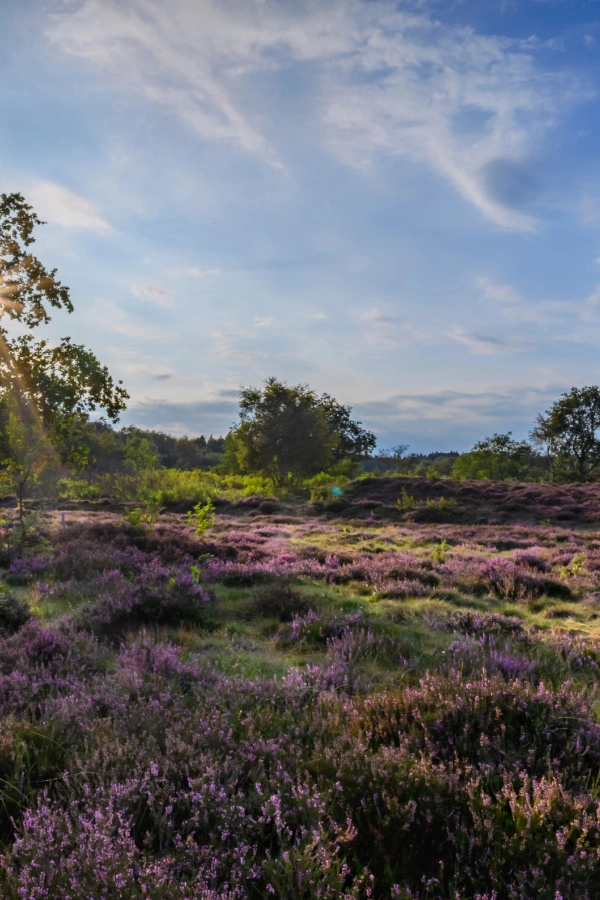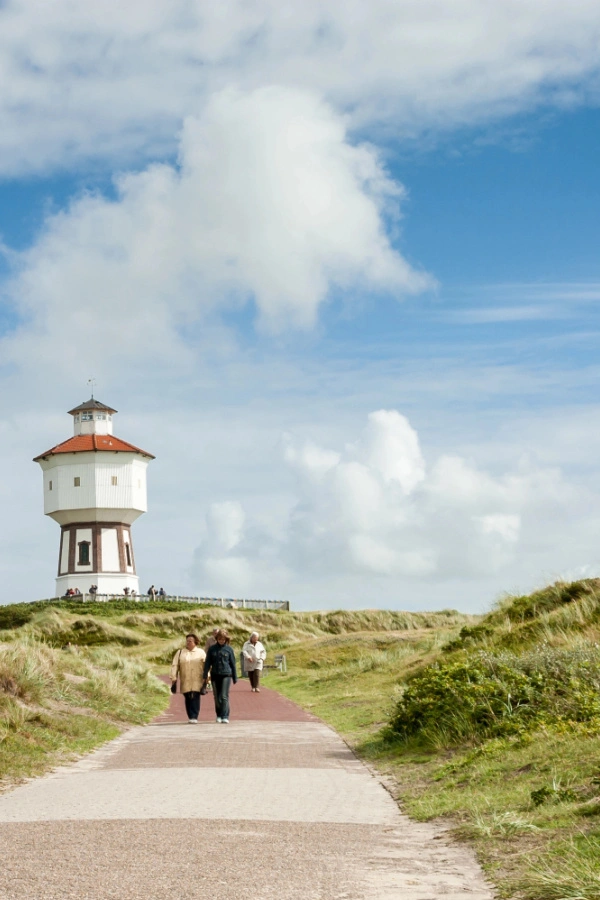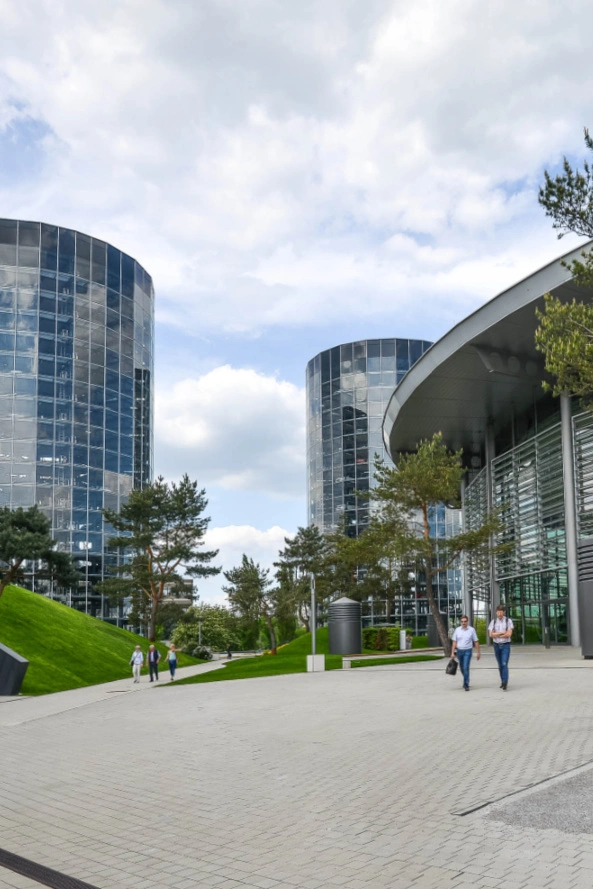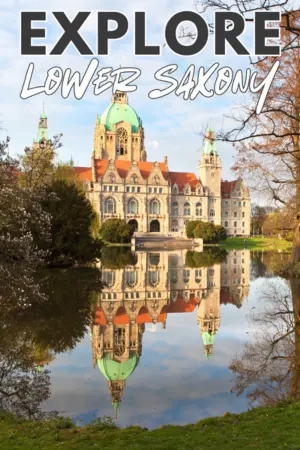- Home
- By Region
- Lower Saxony
- Lower Saxony Germany
Lower Saxony, Germany: Travel Guide to Niedersachsen
By: Gerhild Fulson / Using her extensive experience and cultural knowledge, Oma Gerhild provides trusted, authentic, and easy-to-follow German recipes both here and in her many cookbooks.
Moin Moin!
Are you ready to discover the natural beauty, diverse landscapes, and rich history of Lower Saxony? Extending from the North Sea coast in the north all the way to the Harz mountains in the south, this northwestern state has it all, from sandy beaches and mudflats to rolling hills and forests.
Perfect for nature lovers and outdoor enthusiasts! Known for its picturesque and charming towns, many of which feature in the Brothers Grimm's fairy tales, Lower Saxony is a wonder to behold.
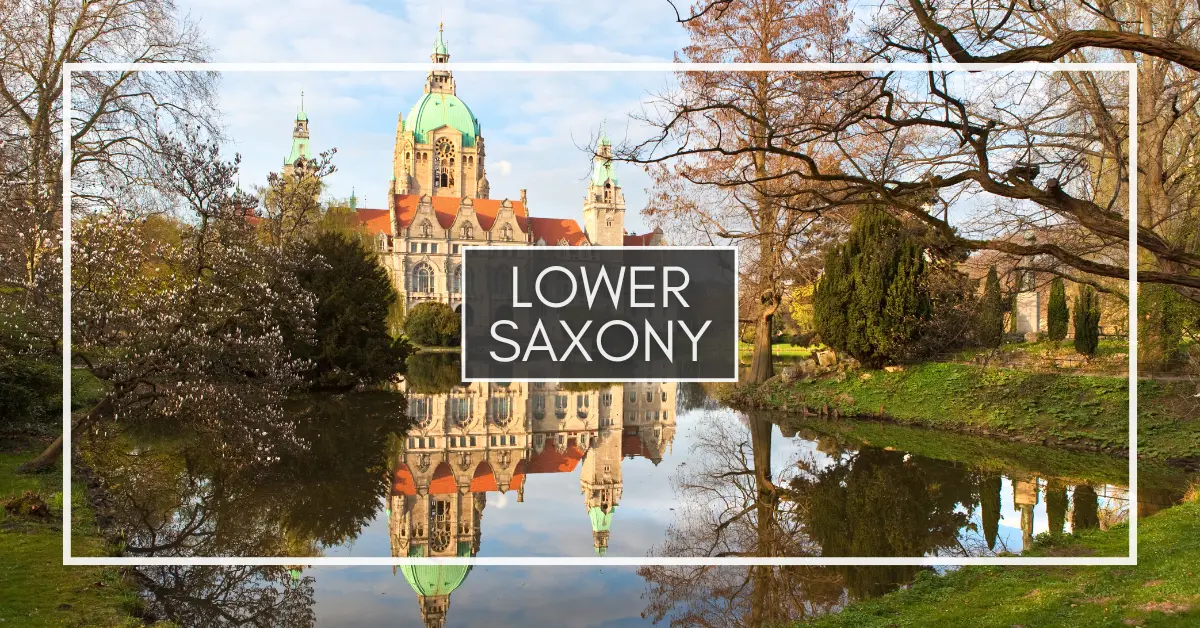 Calm reflection at Neus Rathaus, Hannover
Calm reflection at Neus Rathaus, HannoverLet's head on this journey together as we learn more about this state and why a place where you can walk on the bottom of the sea during low tide in the morning and explore a quaint town straight out of the middle ages in the afternoon is worthy of exploring.
Grab yourself a snack, perhaps a plate of grünkohl mit pinkel (kale with sausage), and let's get into it. It's time to discover Lower Saxony!
Lower Saxony Trip Planning at a Glance
On this page:
A bit of Lower Saxony history and its status as a state
With a past as diverse as its scenery, let's go back to ancient times for a quick overview of its history to see how it has evolved into the state it is today:
- before 2,000 BC: there is archaeological evidence of human settlements in this region
- 1st Century AD: Germanic tribes, as well as Saxons, inhabited the region
- 8th Century: Charlemagne's military campaigns led to the conquest and Christianization of the Saxons
- Middle Ages: the region was partitioned into smaller territories, most notably, the Duchy of Burnswick-Lüneburg
- 1692: the Electorate of Hanover was established within the Holy Roman Empire
- 1714 - 1837: the Elector of Hanover also served as king of Great Britain, ending when Queen Victoria ascended to the British throne
- 1866: the Kingdom of Hanover, after siding with Austria in the Austro-Prussian War, was annexed by Prussia
- 1918: after Germany's loss in World War I, the monarchies were abolished and the region became part of the Weimar Republic
- 1946: the state of Hanover merged with three other small states, forming the modern state of Lower Saxony, and became part of the British occupation zone
- 1949: Lower Saxony became one of the founding states of the Federal Republic of Germany and Hanover became its capital (Hanover had been badly damaged during World War II, but was rebuilt as the state's administrative center)
Today, Lower Saxony is one of Germany's 16 federal states. As with every other state, it has its own constitution, parliament, and government. Based on the size of its population, Lower Saxony sends six representatives to the Bundesrat (the legislative body representing the states in federal matters).
Lower Saxony plays a vital role in Germany's economy, especially in the automotive industry, with Volkswagen's headquarters and main plant located in Wolfsburg. There is also a close relationship between the automaker and the state government with Lower Saxony owning about 11.8% of Volkswagen's shares.
Lower Saxony has also preserved its natural beauty and cultural heritage, boasting two UNESCO World heritage sites, many nature parks, and charming towns. Combined with its innovative spirit, this great state offers visitors a wide range of experiences and adventures.
Where in the world is Lower Saxony?
Lower Saxony is located in northwestern Germany. It is bordered by the North Sea and shares a border with many German states: Schleswig-Holstein and Hamburg to the north, Mecklenburg-Vorpommern to the northeast, Brandenburg and Saxony-Anhalt to the east, Thuringia to the southeast, Hesse to the south, and North Rhine-Westphalia to the southwest. It also encompasses the historic city-state of Bremen and shares an international border with the Netherlands to the west.
It is the second largest of the 16 states by area and fourth largest by population.
Lower Saxony's diverse landscape can be summed up by the following:
- the North sea coast, which includes the Wadden Sea (a UNESCO world heritage site), the East Frisian Islands, and quaint coastal towns and culture
- the Lüneburg Heath, famous for its purple heather blooms in late summer, yet beautiful year-round with its heathland, forests, and charming villages
- the Börde, one of the most fertile regions in Germany
- the Harz Mountains, with its rugged peaks, dense forests, beautiful valleys, rivers, and waterfalls
- the Elbe River, the Ems river, and Weser River, among others
Due to its proximity to the North Sea, Lower Saxony has a temperate maritime climate with plenty of rainfall in the northern part of the state, while the southern portion is warmer and drier.
Hanover, the state capital, is famously known for its trade fairs and the Herrenhausen Gardens. Other major cities include Braunschweig, Oldenburg, Osnabrück, and Wolfsburg, the home of Volkswagen.
Lower Saxony is divided into 37 rural districts and 8 urban districts, which allows for better governance of both rural areas and urban centers.
Discover the unique culture of Lower Saxony
Due to its diverse landscapes and history, Lower Saxony's culture and traditions vary; from the pristine North Sea coast and its local fisherman to the rugged Harz Mountains and its dwellers, from rural areas and farmers to urban centers and city dwellers, you will find a vast array of cultural experiences.
Lower Saxon dialect
Historically, the primary dialect spoken in Lower Saxony was Low German, also known as Plattdeutsch. Today, Standard German (often referred to colloquially as High German) is the predominant dialect, although you will still hear various Low German dialects spoken even though these have been in decline. Most Germans who speak Low German are also fluent in Standard German, so you should have no problems communicating with the local people.
Festivals and traditions
There is a wide range of festivals that are celebrated throughout the year, such as:
- the Hanover Schützenfest, the biggest marksmen's festival in the world
- the Maschseefest in Hanover, a huge weeks-long lakeside celebration with food, music, and fireworks
- the many Christmas markets, with the one in Goslar being especially renowned
Fairy tales and legends
Lower Saxony is famous for its fairy tales and legends and is part of the German Fairy Tale Route, which includes towns made famous by the Brothers Grimm stories. The town of Hamelin is famously known for its Pied Piper legend, which is reenacted weekly from May to September.
Arts and culture
The arts and culture scene in Lower Saxony is rich and diverse:
- museums and galleries, such as the Sprengel Museum in Hanover and the Autostadt in Wolfsburg
- music festivals, such as the International Händel Festival in Göttingen and local festivals where folk music and traditional dances are celebrated
- theater and performing arts, such as the Theater Osnabrück and Oldenburgisches Staatstheater
- festivals and events, such as the aforementioned Maschsee Festival
- traditional crafts, such as pottery, weaving, and woodcarving
Lower Saxon cuisine
The cuisine here is hearty and as diverse as its many landscapes. Here's a sample of the local food and drinks you'll want to try:
- weißer spargel (white asparagus), in season from April to June and typically served with boiled potatoes, hollandaise sauce, and ham or schnitzel
- grünkohl mit pinkel (kale with sausage), served with bacon and potatoes and is especially popular in winter
- matjes (pickled herring), from the North Sea and often served with onions, apples, and cream sauce
- braunschweiger (liverwurst), originating from the city of Braunschweig and served on bread with mustard, pickles, and onions
- ostfriesentee, a strong black tea from East Frisia served with rock sugar and a bit of cream
- heidschnucke, (moorland sheep), native to the Lüneburg Heath and typically served with potatoes, local veggies, and gravy
The 5 must-see places to discover Lower Saxony
Lower Saxony offers a vast array of attractions, from its beautiful and stunning coastal scenery to its breathtaking mountainous regions to its charming and historic cities. Here are 5 must-see places to visit:
Hanover
Hanover, the state capital, is the perfect place to begin your discovery of Lower Saxony. Visit the New Town Hall with its stunning architecture and panoramic views of the city. The Royal Gardens of Herrenhausen are a must-see as one of Europe's finest examples of Baroque garden design. And for a truly unique experience, take a stroll or bike ride through the Eilenriede, the largest urban city forest in Germany.
Lüneburg Heath
A large nature reserve, the Lüneburg Heath has a vast expanse of heath, forests, and breathtaking scenery. It is especially stunning in late summer, from August to September, when the heather blooms purple. A popular way to enjoy and explore the heath is by horse-drawn carriage. Visit the quaint and historic old town of Celle and marvel at the well-preserved half-timbered houses.
East Frisian Islands
This string of islands off Lower Saxony's North Sea coast is a great place to enjoy vast sandy beaches and dunes, all sorts of wildlife, and of course, the invigorating sea air. From Borkum to Wangerooge, each island has its own unique character to enjoy. These islands also include the mudflats that are part of the Wadden Sea.
Harz Mountains
Located in southeastern Lower Saxony between the Weser and Elbe rivers, the Harz Mountains offer attractions year-round. The historic town of Goslar with its medieval architecture is a UNESCO World Heritage Site and is well known for its Christmas market. Take a ride on the Harzer Schmalspurbahnen (Harz Narrow-Gauge Railways) to Brocken, the highest peak of the mountains.
Wolfsburg
Volkswagen headquarters are located in Wolfsburg. Adjacent to the Volkswagen factory is the Autostadt, a unique automotive theme park and museum. The Phaeno Science Center, with its futuristic building designed by renowned architect Zaha Hadid, is a world-class museum with interactive exhibits that's engaging for visitors of all ages.
This is just a snippet of what Lower Saxony has to offer. Filled with charming towns, nature parks, historical sites, and modern attractions, there is so much to discover. Whether you want to explore coastal landscapes, delve into medieval history, partake in outdoor adventures, or experience modern technology, Lower Saxony has something for everyone!
Additional travel tips
If you're ready to begin your adventure through Lower Saxony, here are some tips to keep in mind for a smooth journey.
When to come
Lower Saxony is a great place to visit year-round, but each season offers different experiences:
Spring (March to May): with mild temperatures and blossoming landscapes, it's a great time to enjoy hiking and other outdoor activities
Summer (June to August): it's the perfect time to enjoy the many beaches, nature parks and forests, and outdoor music festivals
Autumn (September to November): with the cooler weather comes beautiful and colorful foliage and landscapes, especially in the Harz Mountains, along with local harvest festivals
Winter (December to February): if you don't mind the cold, there are cozy Christmas markets to explore and winter sports to enjoy in the Harz region
How to travel
Using Lower Saxony's public transportation is a great way to see this beautiful state. With trains and buses connecting major cities and towns, there are various regional passes available for a more cost-effective way to travel.
For visiting rural areas and smaller towns, you might want to consider renting a car, but keep in mind that certain city centers and islands have restrictions on car use.
Local customs
The local people tend to be welcoming, friendly, and down-to-earth. When visiting coastal areas, you're very likely to be greeted with "Moin" throughout the day. It translates roughly to "Hi" or "Hello" in English. When entering small shops or restaurants, it is appropriate to greet staff and other customers with a simple "Hallo".
Speak like a local
High or Standard German is widely spoken, but here are a few local phrases to learn, just for fun:
Moin - hello
Tschüss - goodbye
Wat mutt, dat mutt - What must be, must be
Budder bei de fische - get to the point (literal translation is "butter by the fish")
With all of these tips in mind, you are now ready to take on the adventure that is Lower Saxony. As the locals say, "Dat warrt moi!" (It's going to be great!)
Lower Saxony FAQ
Why is it called Lower Saxony?
Why is it called Lower Saxony?
The name "Lower Saxony" originates from its geographical location and historical context. It refers to the area occupied by the Saxons in the early medieval period, which lies to the northwest of the region once known as Upper Saxony (present-day Saxony). This name highlights its lower-lying geographical position in relation to Upper Saxony.
What is the capital of Lower Saxony?
What is the capital of Lower Saxony?
The capital of Lower Saxony is Hanover (Hannover in German). This city is a cultural and economic hub, known for its trade fairs, beautiful gardens, and as a key administrative center of the state.
Is Lower Saxony a good place to live?
Is Lower Saxony a good place to live?
Yes, Lower Saxony is generally considered a good place to live. It offers a high quality of life with access to natural beauty, a range of cultural and historical attractions, and relatively affordable living costs compared to other German regions.
What is a fun fact about Lower Saxony?
What is a fun fact about Lower Saxony?
A fun fact about Lower Saxony is that it is home to the largest area of heathland in Germany, the Lüneburg Heath (Lüneburger Heide). This unique landscape is famous for its purple heather blooms and is a popular destination for nature lovers and outdoor enthusiasts.

